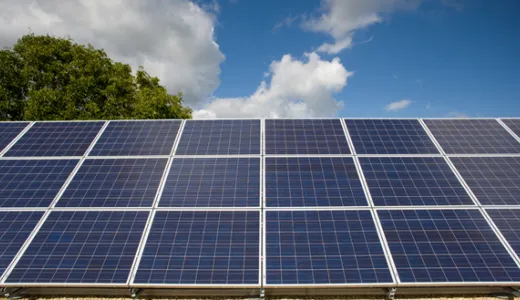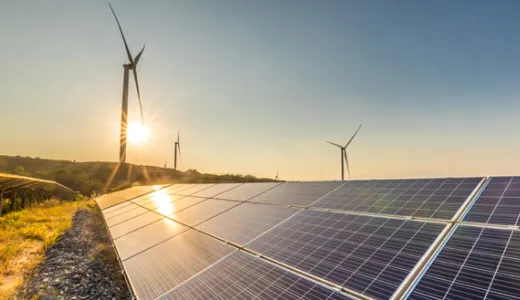What is battery storage?
Battery storage technologies are essential to speeding up the replacement of fossil fuels with renewable energy. Battery storage systems will play an increasingly pivotal role between green energy supplies and responding to electricity demands.
Battery storage, or battery energy storage systems (BESS), are devices that enable energy from renewables, like solar and wind, to be stored and then released when the power is needed most.
Lithium-ion batteries, which are used in mobile phones and electric cars, are currently the dominant storage technology for large scale plants to help electricity grids ensure a reliable supply of renewable energy. We’ve begun deploying this technology with heavier equipment, working with Viridi Parente – a company that makes battery storage systems for industrial, commercial and residential buildings.
Why is battery storage important and what are its benefits?
Battery storage technology has a key part to play in ensuring homes and businesses can be powered by green energy, even when the sun isn’t shining or the wind has stopped blowing.
For example, the UK has the largest installed capacity of offshore wind in the world, but the ability to capture this energy and purposefully deploy it can increase the value of this clean energy; by increasing production and potentially reducing costs.
Every day engineers at National Grid and electricity grids worldwide must match supply with demand. Managing these peaks and troughs becomes more challenging when the target is to achieve net zero carbon production. Fossil-fuel fired plants have traditionally been used to manage these peaks and troughs, but battery energy storage facilities can replace a portion of these so-called peaking power generators over time.
The UK government estimates technologies like battery storage systems – supporting the integration of more low-carbon power, heat and transport technologies – could save the UK energy system up to £40 billion ($48 billion) by 2050, ultimately reducing people’s energy bills.
Prescott Hartshorne, a Director at National Grid Ventures in the US, says: “Storage enables further renewable generation, both from an operational and reliability perspective. It’s also a key piece of our utility customers’ ongoing evolution and transition to renewables.”

How exactly does a battery storage system work?
Battery energy storage systems are considerably more advanced than the batteries you keep in your kitchen drawer or insert in your children’s toys. A battery storage system can be charged by electricity generated from renewable energy, like wind and solar power.
Intelligent battery software uses algorithms to coordinate energy production and computerised control systems are used to decide when to store energy or to release it to the grid. Energy is released from the battery storage system during times of peak demand, keeping costs down and electricity flowing.
This article is concerned with large-scale battery storage systems, but domestic energy storage systems work on the same principles.
What renewable energy storage systems are being developed?
Storage of renewable energy requires low-cost technologies that have long lives – charging and discharging thousands of times – are safe and can store enough energy cost effectively to match demand.
Lithium-ion batteries were developed by a British scientist in the 1970s and were first used commercially by Sony in 1991, for the company’s handheld video recorder. While they’re currently the most economically viable energy storage solution, there are a number of other technologies for battery storage currently being developed. These include:
- Compressed air energy storage: With these systems, generally located in large chambers, surplus power is used to compress air and then store it. When energy is needed, the compressed air is released and passes through an air turbine to generate electricity.
- Mechanical gravity energy storage: One example of this type of system is when energy is used to lift concrete blocks up a tower. When the energy is needed, the concrete blocks are lowered back down, generating electricity using the pull of gravity.
- Flow batteries: In these batteries, which are essentially rechargeable fuel cells, chemical energy is provided by two chemical components dissolved in liquids contained within the system and separated by a membrane.
Prescott Hartshorne says: “The next decade will be big for energy storage in general and for batteries in particular. It will be an important proving time for batteries and for other technologies.”
Last updated: 9 May 2023
The information in this article is intended as a factual explainer and does not necessarily reflect National Grid's strategic direction or current business activities.



